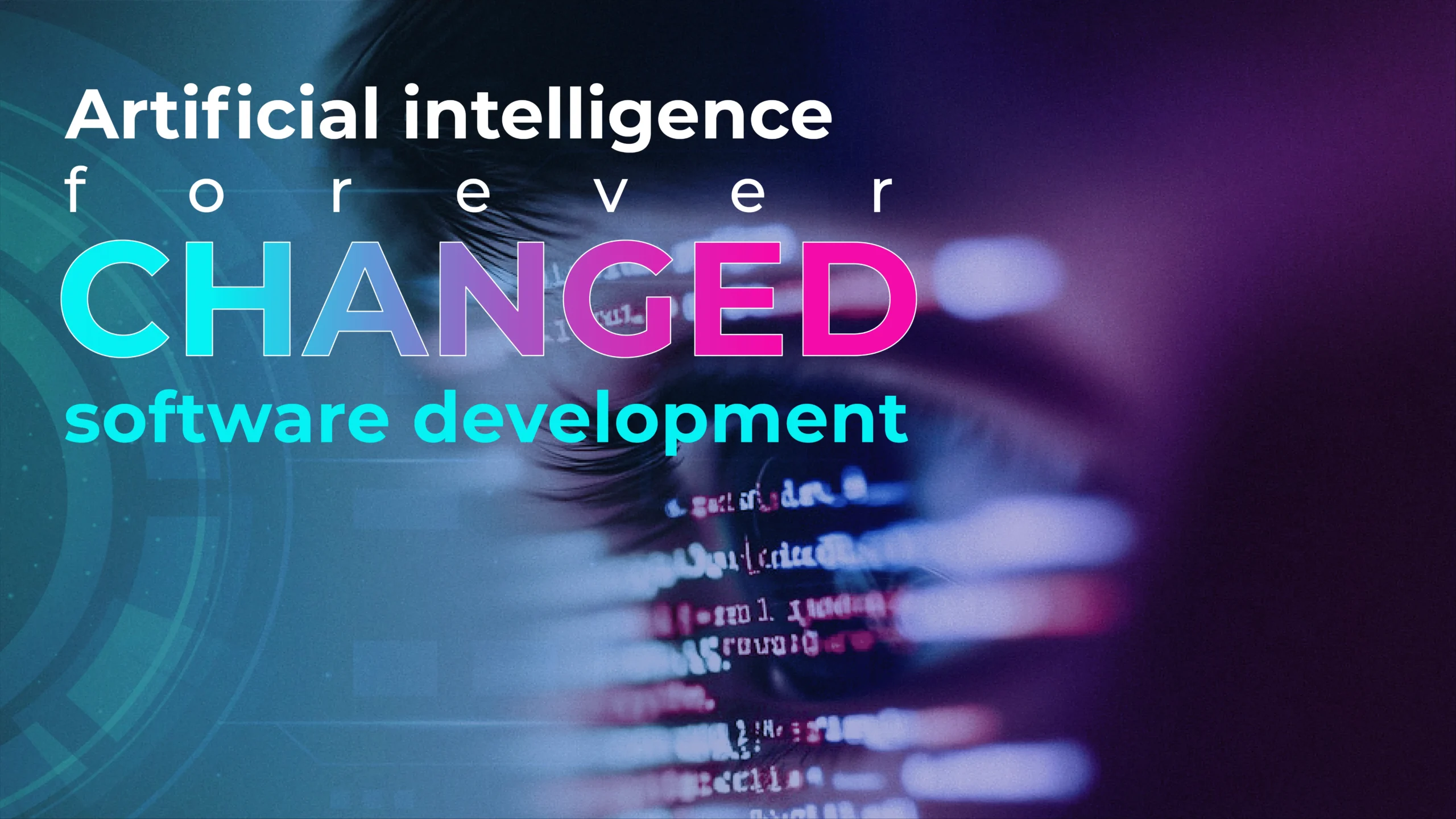Artificial intelligence (AI) isn’t just another tech tool—it’s a total game-changer rewriting the rules of software development.
Back in the day, teams spent months manually designing, coding, and debugging. Now, AI acts like an ever-present partner, optimizing workflows, predicting errors, and even writing functional code.
AI’s impact hits two fronts: how software’s built and what apps we can create. From automating repetitive tasks to letting machines learn from users, it’s smashing barriers once thought unbreakable. And this isn’t the future—it’s already here.
Impact on the development cycle
AI isn’t just speeding up software creation—it’s transforming every phase of the dev cycle.
From writing code to catching bugs and planning projects, AI-powered tools cut friction, slash downtime, and let teams focus on complex problems, not mind-numbing tasks.
Code that writes itself
Imagine a buddy who knows every coding language and suggests lines as you type. Tools like GitHub Copilot or Amazon CodeWhisperer do exactly that—they analyze context and spit out full functions, saving hours of work.
No more memorizing syntax or APIs; AI handles the nitty-gritty while you focus on logic.
But it’s not magic: these systems learn from billions of public code lines. The catch? They might make mistakes or recycle generic solutions. That’s why devs still matter—to validate and tweak AI’s output. Still, productivity skyrockets.
The result? Democratization. Less technical folks can prototype ideas fast, and seasoned teams scale projects without getting stuck in repetitive details. AI isn’t replacing humans—it’s leveling the playing field.
Faster bug detection & fixes
Remember debugging line by line? AI’s making that obsolete. Platforms like Snyk or DeepCode scan projects in seconds, spotting vulnerabilities, bugs, or optimization tips. And they don’t just point out issues—they explain how to fix ’em.
This is gold for agile teams. AI-driven tests simulate thousands of scenarios in minutes—something humans can’t match. Even ChatGPT can analyze error logs and suggest fixes, like a 24/7 teammate.
Smarter time & cost estimates
Estimating timelines and budgets used to be a guessing game. Now, AI crunches historical data from similar projects to predict realistic deadlines. Tools like ClickUp or Jira use models that weigh complexity, risks, and team performance.
These systems adapt on the fly. If a sprint slips, AI recalculates dates and reprioritizes tasks. Managers make data-driven choices, not gut calls.
And it’s not just for leaders: devs get early warnings if a task’s underestimated, dodging burnout from unrealistic deadlines. AI’s making planning less chaotic and more… human.
Impact on apps
But the change doesn’t stop there: AI’s redefining what apps can actually do.
Thanks to smarter algorithms and self-learning systems, software now talks like humans, makes expert decisions, and adapts on its own. This isn’t evolution—it’s a user experience revolution.
Natural human interaction
Apps aren’t just buttons and menus anymore. With language models like GPT-4 or voice assistants like Alexa, users chat or speak like they would to a friend. Need to book a flight? Just say, “I want to go to Paris in October,” and AI handles the rest.
This simplicity opens doors for non-tech users. Grandparents, kids, or non-native speakers can interact with tech without frustration. Plus, AI gets context: ask “What’s fun today?” after searching museums, and it’ll recommend nearby exhibits.
The future’s conversational. Graphical interfaces will stick around, but voice and text are stealing the spotlight—and this is just the start.
Expert systems
Software that diagnoses diseases or gives legal advice? AI-powered expert systems like IBM Watson analyze massive data to deliver specialized recommendations in seconds. Doctors cross-check symptoms against millions of cases; lawyers scan legal precedents in minutes.
This doesn’t replace pros—it supercharges them. Engineers simulate bridge failures with AI; marketers predict trends with live data. Knowledge isn’t locked in books or brains anymore—it’s in accessible algorithms.
Best part? These systems keep learning. Every new case makes them sharper. It’s like having a mentor who never stops updating.
Self-Learning software
Apps aren’t static anymore. Netflix suggests shows based on your binge habits, Spotify crafts playlists like it’s known you forever, and TikTok learns your vibe in hours—all thanks to machine learning.
This means hyper-personalized experiences. A fitness app tweaks workouts as you progress; an e-commerce site shows products you’ll actually like. Software evolves with you, no manual updates needed.
And it’s not just for consumers: companies use models to predict machinery failures or optimize delivery routes in real time. AI makes software not just reactive—but proactive. The future’s fluid, and AI’s driving.
One thing’s clear: AI’s been a key player in software development for years, but we’re nowhere near seeing its full potential.
As we grow accustomed to these tools, AI’s impact on dev will only get bigger. But remember: AI isn’t a replacement—it’s a complement to the skills we already have.
